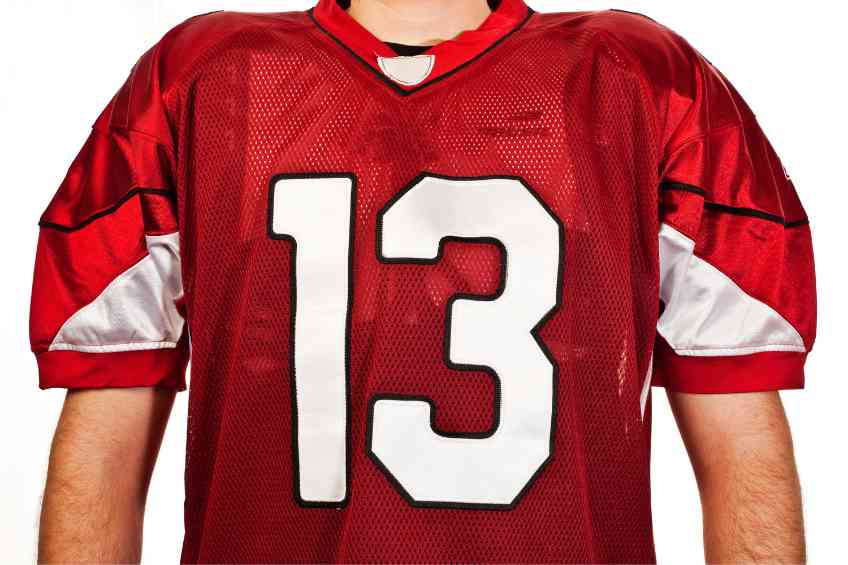By John Salak –
Finally, the secret to looking thinner has been revealed. It is all in the numbers. Not the number of pounds, of course, but rather the numbers people wear—as in on athletic jerseys.
This numbers game was first suspected five years ago when ESPN reported that football wide receivers preferred wearing numbers between 10 and 19 because it made them look thinner. The theory was interesting but unproven at the time by the University of California, Los Angeles Professor Ladan Shams.
Now, proof has emerged thanks to a new UCLA study. Two different experiments revealed that subjects consistently reported that images of players in jerseys numbered from 10 to 19 looked thinner than those in jerseys numbered from 80 to 89. It even occurred when the body sizes were the same. The results suggest that previously learned statistical associations between numbers and sizes influence the perception of body size, the university reported.
“How we perceive the world is highly influenced by our prior knowledge,” said Shams, the paper’s senior author. “In our daily lives, numbers written on objects—on a bag of sugar in the supermarket or weights in the gym—usually represent the magnitude of the objects. The higher the number, the bigger or more massive the object generally is.”
The brain maintains these associations.
“Previous research has established that our brains are very good at detecting and storing statistical associations and regularities, unbeknownst to us, and those associations can shape future perception,” Shams added.
The results also fall in line with changes in the sport’s rules. A longtime NFL rule, for example, required wide receivers to wear uniform numbers between 80 and 89, but that restriction was lifted in 2004, clearing the way for these players to use lower numbers on their uniforms. By 2019, nearly 80 percent of the league’s wide receivers wore numbers between 10 and 19.
Shams, a specialist in the science of perception, took up the challenge to determine whether numbers influenced body perceptions in 2019—first conducting an online study on perceptions during the pandemic lockdown and then following this up with a second in-person study to test her suppositions about the popularity of lower numbers.
Both experiments revealed that subjects perceived players with higher numbers to be huskier than players with lower numbers, regardless of actual body size.
These results strongly support the hypothesis that when processing perception of body size, the brain leans on learned associations between numbers and objects’ size attributes, she said. Admittedly, these perceptions have no impact on athletes’ performance. However, the learned associations, perceptions and cognitive biases may have harmful consequences in other areas, such as influencing ill-founded judgments, decisions and behavior toward people or social groups. A group frequently associated with negative qualities may result in others not treating these individuals fairly.
“Our work highlights the importance of representation,” Shams said. “We need to see all kinds of people doing the full diversity of things people can do. We can use the statistical learning power of our brains to reduce implicit bias.”
In the meantime, those feeling a bit thick may want to pull on the number 11 jersey.













